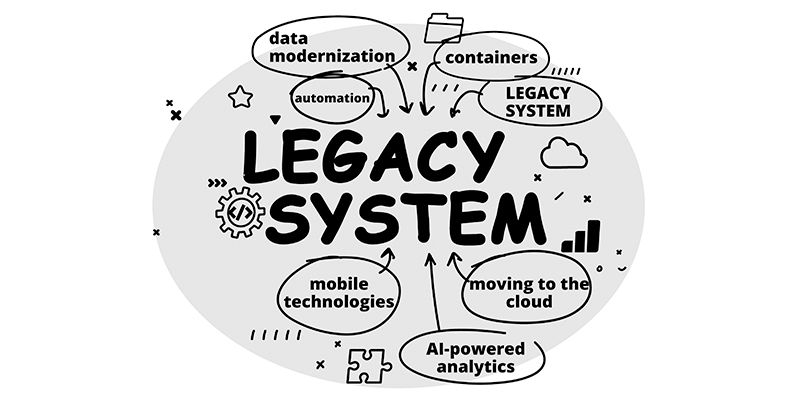Challenges and Future Trends in Industrial Networking: Navigating the Evolving Landscape
Industrial networking stands at the crossroads of technological innovation and operational efficiency, playing a pivotal role in the modern industrial ecosystem. As the industrial landscape continues to evolve with the advent of Industry 4.0 and the Industrial Internet of Things (IIoT), the challenges and trends within this domain have become more pronounced than ever before. In this comprehensive blog post, we delve deep into the world of industrial networking, examining its current challenges, the transition from legacy to modern systems, future trends, and the roadmap for navigating this dynamic terrain.
Industrial networking, often referred to as the backbone of industrial processes, encompasses the interconnected web of devices, systems, and applications that facilitate data exchange and communication within manufacturing and production environments. This intricate network enables real-time monitoring, control, and optimization of operations, thereby driving productivity and enabling informed decision-making.

Current Challenges in Industrial Networking
Industrial Cybersecurity: Safeguarding the Digital Realm
One of the foremost challenges in the realm of industrial networking is the escalating vulnerability to cybersecurity threats. With the proliferation of interconnected industrial environments, the risk of network attacks on critical infrastructure has grown exponentially. Protecting industrial networks from malicious actors requires robust cybersecurity measures encompassing both Information Technology (IT) and Operational Technology (OT) realms. Organizations must implement stringent protocols, regular vulnerability assessments, and advanced intrusion detection systems to fortify their defense mechanisms.
Bandwidth and Latency
With an increasing number of connected devices and exponential data generation, concerns around network bandwidth and latency become more pronounced. Particularly in industrial scenarios that require real-time or sub-second decision-making, network latency in industrial networking can lead to inefficiencies or safety concerns. Optimizing network infrastructure, adopting faster communication technologies, and implementing intelligent data processing methods can mitigate this challenge.
Network Reliability and Resilience
Industrial operations often span vast areas and harsh environments, making reliable connectivity crucial in these diverse settings. Electromagnetic interference, signal attenuation, and equipment failures can lead to network outages, impacting production efficiency and data flow. Enhancing network reliability and resilience can be achieved through redundant design, emergency recovery plans, and anti-interference technologies.
Transitioning from Legacy to Modern Systems
The industrial domain is characterized by the coexistence of legacy systems and cutting-edge technologies. Integrating traditional equipment into modern network frameworks poses compatibility and interoperability barriers. Organizations often find themselves balancing the optimization of existing infrastructure with the benefits of embracing digital transformation. This transition demands meticulous planning, retrofitting strategies, and the adoption of open communication protocols that bridge the gap between old and new systems.

How to Upgrade Industrial Networks?
To successfully navigate this transition and upgrade industrial networks, consider the following steps:
-
Conduct a Comprehensive Network Assessment: Embarking on the journey of network upgrade necessitates a thorough evaluation of the existing infrastructure. This includes assessing network architecture, identifying bottlenecks, and pinpointing areas susceptible to security vulnerabilities. A comprehensive assessment lays the groundwork for devising effective upgrade strategies aligned with organizational goals.
-
Embrace Edge Computing: Edge computing has emerged as a potent solution to enhance industrial network efficiency and responsiveness. By processing data near the data source, edge computing reduces latency and ensures real-time decision-making. This approach proves particularly beneficial in scenarios requiring immediate action, enabling organizations to achieve operational excellence and optimize resource utilization.
-
Implement Software-Defined Networking (SDN): Software-Defined Networking (SDN) is reshaping the industrial networking landscape by decoupling network control from its hardware infrastructure. SDN enables dynamic configuration, centralized management, and simplified provisioning of network resources. By abstracting network functionality, organizations can swiftly adapt to evolving demands, enhance scalability, and streamline network maintenance.
Future Trends in Industrial Networking
Integration of 5G for Enhanced Connectivity
The integration of 5G technology into industrial networks heralds a paradigm shift in connectivity. With capabilities such as ultra-low latency, high bandwidth, and support for massive device connections, 5G opens doors to real-time data exchange, remote operations, and augmented reality applications. Industries across sectors will harness the potential of 5G to drive innovation, achieve unprecedented efficiency gains, and unlock novel use cases.
Edge HPC and Predictive Analytics
The fusion of edge High Performance Computing (HPC) with predictive analytics holds the promise of revolutionizing industrial operations. By deploying HPC algorithms at the edge, organizations can achieve real-time data analysis, enabling rapid decision-making without reliance on centralized cloud resources. Predictive analytics leverages historical data to forecast potential equipment failures, optimize maintenance schedules, and minimize downtime.

Blockchain for Enhanced Security and Transparency
Blockchain technology is gaining traction in the industrial networking domain due to its exceptional security and transparency features. By creating an immutable and decentralized ledger of transactions, blockchain ensures data integrity and prevents unauthorized access. Industrial supply chains stand to benefit from enhanced traceability, secure data sharing, and streamlined audit processes.
Conclusion
Industrial networking transforms through digital innovation. Embracing the future, organizations navigate challenges, fortify cybersecurity, transition to modern systems, and build robust networks. Tracking trends like 5G, HPC, and blockchain, enterprises chart a course to an efficient, secure industrial future. Evolution reshapes industries, propelling us into a connected era of boundless possibilities.
You might be interested in
Email Address

-
PoE vs PoE+ vs PoE++ Switch: How to Choose?
May 30, 2024















